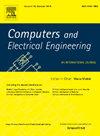Design and development of SIW based H-plane horn applicator for sustainable agriculture applications
IF 4
3区 计算机科学
Q1 COMPUTER SCIENCE, HARDWARE & ARCHITECTURE
引用次数: 0
Abstract
Traditional weed control methods often depend on chemical herbicides, raising ecological and health hazards which are introducing unsustainable practices in agriculture. This study explores electromagnetic (EM) wave-based soil sterilization as a sustainable alternative. A substrate-integrated waveguide (SIW) horn applicator, operating at 2.45 GHz, is proposed for efficient weed mitigation. The applicator is designed on an ultrathin substrate with a thickness of λ0/10 at 2.45 GHz, providing improved gain and maintaining a compact, low-profile design. The proposed antenna incorporates Vivaldi-shaped flaring to enhance radiation performance, specifically in terms of directivity and gain. Further optimizations include the introduction of reflector nails, substrate extension, and refined flaring geometry, which improve EM radiation performance. Experimental validation indicates that with 25 watts of power, the soil temperature can be raised to 68.6°C within 60 min, sufficient to thermally eradicate most weed species. Comprehensive thermal simulations were conducted to assess the antenna's efficacy in diverse soil conditions, such as wet and loamy soils, examining heat distribution by changing loss tangent of soil. The nutrient values such as NPK, PH and electric conductivity of soil also been measured with both controlled and treated soil. Results indicates a promising value across all the measured parameters. These analyses demonstrate the thermal impact of the SIW horn antenna and its potential for localized soil heating. The results provide critical insights into the use of EM waves for soil sterilization, offering a sustainable, non-chemical approach to weed management, with potential implications for both agricultural practices and environmental conservation.

基于SIW的可持续农业h形面角器的设计与开发
传统的杂草控制方法往往依赖于化学除草剂,增加了生态和健康危害,并在农业中引入了不可持续的做法。本研究探讨了电磁(EM)波为基础的土壤灭菌作为可持续的替代方案。提出了一种工作频率为2.45 GHz的基片集成波导(SIW)喇叭施加器,用于有效地缓解杂草。该涂敷器设计在2.45 GHz厚度为λ /10的超薄衬底上,提供了更高的增益,并保持了紧凑、低调的设计。提出的天线采用维瓦尔第形状的信号源来增强辐射性能,特别是在指向性和增益方面。进一步的优化包括引入反射器钉、基板扩展和改进的喇叭口几何形状,从而提高了电磁辐射性能。实验验证表明,在25瓦的功率下,土壤温度可在60 min内升至68.6℃,足以热灭大部分杂草。为了评估天线在不同土壤条件下(如湿土和壤土)的效能,进行了全面的热模拟,通过改变土壤的损失切线来检测热量分布。同时测定了对照和处理土壤的氮磷钾、PH和电导率等养分值。结果表明,所有测量参数的值都很有希望。这些分析证明了SIW喇叭天线的热影响及其对局部土壤加热的潜力。研究结果为利用电磁波进行土壤消毒提供了重要见解,为杂草管理提供了一种可持续的、非化学的方法,对农业实践和环境保护都有潜在的影响。
本文章由计算机程序翻译,如有差异,请以英文原文为准。
求助全文
约1分钟内获得全文
求助全文
来源期刊

Computers & Electrical Engineering
工程技术-工程:电子与电气
CiteScore
9.20
自引率
7.00%
发文量
661
审稿时长
47 days
期刊介绍:
The impact of computers has nowhere been more revolutionary than in electrical engineering. The design, analysis, and operation of electrical and electronic systems are now dominated by computers, a transformation that has been motivated by the natural ease of interface between computers and electrical systems, and the promise of spectacular improvements in speed and efficiency.
Published since 1973, Computers & Electrical Engineering provides rapid publication of topical research into the integration of computer technology and computational techniques with electrical and electronic systems. The journal publishes papers featuring novel implementations of computers and computational techniques in areas like signal and image processing, high-performance computing, parallel processing, and communications. Special attention will be paid to papers describing innovative architectures, algorithms, and software tools.
 求助内容:
求助内容: 应助结果提醒方式:
应助结果提醒方式:


